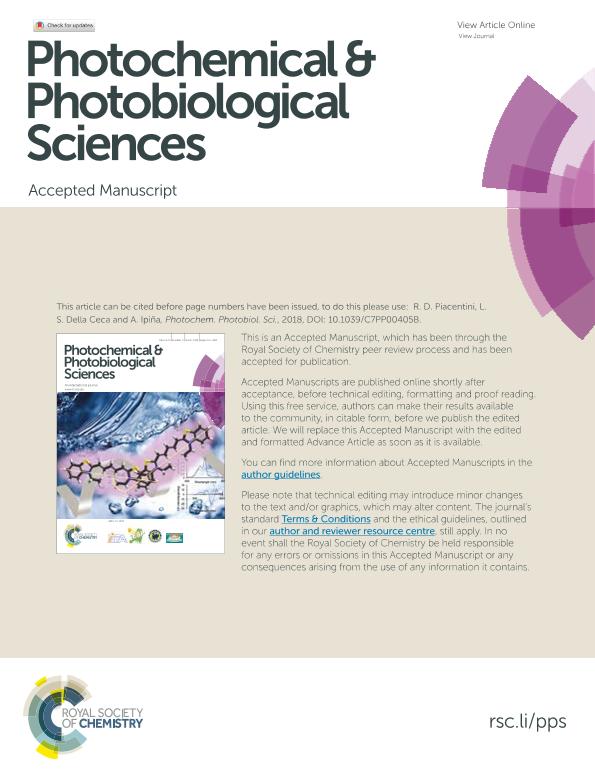Mostrar el registro sencillo del ítem
dc.contributor.author
Piacentini, Ruben Dario Narciso

dc.contributor.author
Della Ceca, Lara Sofia

dc.contributor.author
Ipiña Hernandez, Adriana

dc.date.available
2020-01-08T17:37:14Z
dc.date.issued
2018-09
dc.identifier.citation
Piacentini, Ruben Dario Narciso; Della Ceca, Lara Sofia; Ipiña Hernandez, Adriana; Climate change and its relationship with non-melanoma skin cancers; Royal Society of Chemistry; Photochemical and Photobiological Sciences; 17; 12; 9-2018; 1913-1917
dc.identifier.issn
1474-905X
dc.identifier.uri
http://hdl.handle.net/11336/93968
dc.description.abstract
Climate change is affecting both the environment and human behaviour. One significant impact is related to health, as detailed in the IPCC 2014 report. In the present work, and as a contribution to this commemorative special issue to Prof. Dr Jan van der Leun, we present the results of the squamous (SCC) and basal-cell carcinoma (BCC) incidence change in relation to the ambient temperature increase. This increase is produced by global warming, mainly induced by anthropogenic atmospheric emissions of greenhouse gases. We have broadened a previous study conducted by van der Leun et al. (Photochem. Photobiol. Sci., 2008, 7, 730-733), by analysing the effective carcinogenicity of UV dose, for the period 2000-2200 and four climate change scenarios (called RCP2.6, RCP4.5, RCP6.0 and RCP8.5). The corresponding percentage increases of the incidence of SCC for 2100 are 5.8, 10.4, 13.8 and 21.4%, and for 2200 they are 4.3, 12.1, 19.0 and 40.5%. In a similar way, the percentage increases of the incidence of BCC for 2100 are 2.8, 4.9, 6.5 and 9.9% and for 2200 they are 2.0, 5.8, 8.9 and 18.2%. We report the SCC and BCC percentage effective incidence results as a function of time, for the whole 21st century and we extended the analysis to the 22nd century, since people possibly affected (like the Z and T generations, born at the beginning of this century) will have a life expectancy extending up to the final decades of the present century and even to the first ones of the next century.
dc.format
application/pdf
dc.language.iso
eng
dc.publisher
Royal Society of Chemistry

dc.rights
info:eu-repo/semantics/openAccess
dc.rights.uri
https://creativecommons.org/licenses/by-nc-sa/2.5/ar/
dc.subject
squamous and basal cell carcinoma
dc.subject
climate change
dc.subject
temperature
dc.subject
radiation
dc.subject.classification
Otras Ciencias de la Tierra y relacionadas con el Medio Ambiente

dc.subject.classification
Ciencias de la Tierra y relacionadas con el Medio Ambiente

dc.subject.classification
CIENCIAS NATURALES Y EXACTAS

dc.subject.classification
Física Atómica, Molecular y Química

dc.subject.classification
Ciencias Físicas

dc.subject.classification
CIENCIAS NATURALES Y EXACTAS

dc.title
Climate change and its relationship with non-melanoma skin cancers
dc.type
info:eu-repo/semantics/article
dc.type
info:ar-repo/semantics/artículo
dc.type
info:eu-repo/semantics/publishedVersion
dc.date.updated
2019-10-24T14:55:10Z
dc.journal.volume
17
dc.journal.number
12
dc.journal.pagination
1913-1917
dc.journal.pais
Reino Unido

dc.description.fil
Fil: Piacentini, Rubén D.. Consejo Nacional de Investigaciones Científicas y Técnicas. Centro Científico Tecnológico Conicet - Rosario. Instituto de Física de Rosario. Universidad Nacional de Rosario. Instituto de Física de Rosario; Argentina
dc.description.fil
Fil: Della Ceca, Lara Sofia. Consejo Nacional de Investigaciones Científicas y Técnicas. Centro Científico Tecnológico Conicet - Rosario. Instituto de Física de Rosario. Universidad Nacional de Rosario. Instituto de Física de Rosario; Argentina
dc.description.fil
Fil: Ipiña, Adriana. No especifica; Argentina
dc.journal.title
Photochemical and Photobiological Sciences

dc.relation.alternativeid
info:eu-repo/semantics/altIdentifier/doi/http://dx.doi.org/10.1039/c7pp00405b
dc.relation.alternativeid
info:eu-repo/semantics/altIdentifier/url/https://pubs.rsc.org/en/content/articlelanding/2018/PP/C7PP00405B
Archivos asociados
